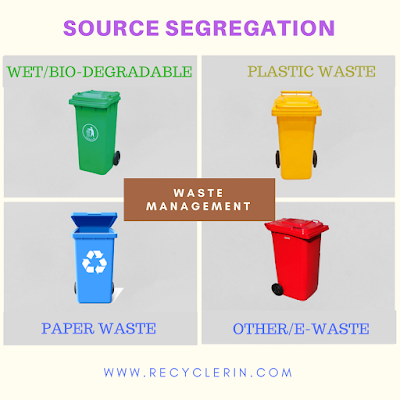All of us know that nowadays, Plastic materials are being the headache for the everyone including the waste management companies and agencies. It would be wrong to say that we should ban the complete use of plastics as plastics have versatile nature. They can be elastic, they can be made strong and can be moulded into almost any shape. Since we do not have the suitable alternative to the plastics, all we can do is to reduce the use of plastics in our life as well as try not to buy any more plastic unless and until it is the must.
Scientists and researchers have been working on finding the alternative for the plastic materials and few have gained fruitful results as well. We'll discuss more this in the next section.
1. Biodegradable plastics:
Biodegradable plastics are plastics that are decomposed by the action of living organisms, usually bacteria. Two basic classes of biodegradable plastics exist. Bioplastics, whose components are derived from renewable raw materials, and plastics made from petrochemicals containing biodegradable additives which enhance biodegradation. However, biodegradable plastics also have the potential to complicate waste management when introduced without appropriate technical attributes, handling systems and consumer education. In addition, it is clear that there could be significant issues in sourcing sufficient biomass to replace a large proportion of the current consumption of polymers.
Some modes of degradation require that the plastic is exposed at the surface (aerobic), whereas other modes will only be effective if certain conditions exist in the landfill or composting systems (anaerobic).
Some companies produce biodegradable additives, to enhance biodegradation. Plastic can have starch powder added as a filler to allow it to degrade more easily, but this still does not lead to the complete breaking down of the plastic.
Some researchers have genetically engineered bacteria to synthesize completely biodegradable plastics, such as Biopol; however, these are expensive at present.
Biodegradable plastics can be a great option for the regular plastic but still, they are very expensive and their cost should be lower down for their extensive use in the daily life.
Do not confuse the biodegradable with compostables. Biodegradable plastics means these can be degradable completely with the help of microbes or bacteria. Other ways include direct sunlight or high-frequency radiations which breaks down these plastics into carbon dioxide and water. But there are varieties of biodegradable plastics are available in the market and each of them takes different time period to degrade. When used in plastic bags, this can be very useful to fight landfilling and littered plastics. Although, they are much costlier at this stage. Hopefully, innovations will not stop here and the cost will reduce further.
Bioplastics, on the other hand, are made from renewable raw materials and biomass resources like vegetable fats and oils, corn starch etc. They can also be made from agro by-products and can be from recycled plastics. Keep in mind that they can or can not be biodegradable. These can be used for many products like cups, pots, bowls, etc. The performance and the cost are the two main things that are preventing bioplastics from replacing vast applications of plastics.
Bioplastics are used for disposable items, such as packaging, crockery, cutlery, pots, bowls, and straws. In principle they could replace many applications for petroleum-derived plastics, however, cost and performance remain problematic.
The environmental impact of bioplastics is often debated, as there are many different metrics for "greenness" and tradeoffs often exist. The debate is also complicated by the fact that many different types of bioplastics exist, each with different environmental strengths and weaknesses, so not all bioplastics can be treated as equal.
Use of biodegradable plastics and Bioplastics can help reduce the pollution caused by the plastic. It can be easily degraded and can solve the issue of landfills. Also, the energy used to make these biodegradable plastics is less than the energy used to make new plastics based on fossil fuel. This will save energy on the larger scale. It is desirable that compostable and degradable plastics are appropriately labelled and used in ways that complement, rather than compromise waste-management schemes.







